A compilation of the ‘Zephyr America’ series that appears exclusively on the Zephyr Facebook page (almost every Wednesday morning). These posts contain additional photographs not seen on Facebook…JS
For the last few months, I’ve added a regular feature for those of you who follow us on the Zephyr Facebook page. But many of you don’t and, of course, as the latest FB post drops lower and lower on your screen and disappears from sight, it disappears from mind as well…at least it does me. So every couple of months, I’m going to compile the best of them here, in one website post. If you enjoy going back and having a look, it will be much easier now…In this first compilation I range from horses and cows, to sunsets and Tucumcari, New Mexico, from the concrete white icons of the prairie, to birds of any color, to Pinky, the Divine Dog of Bueyeros, New Mexico…
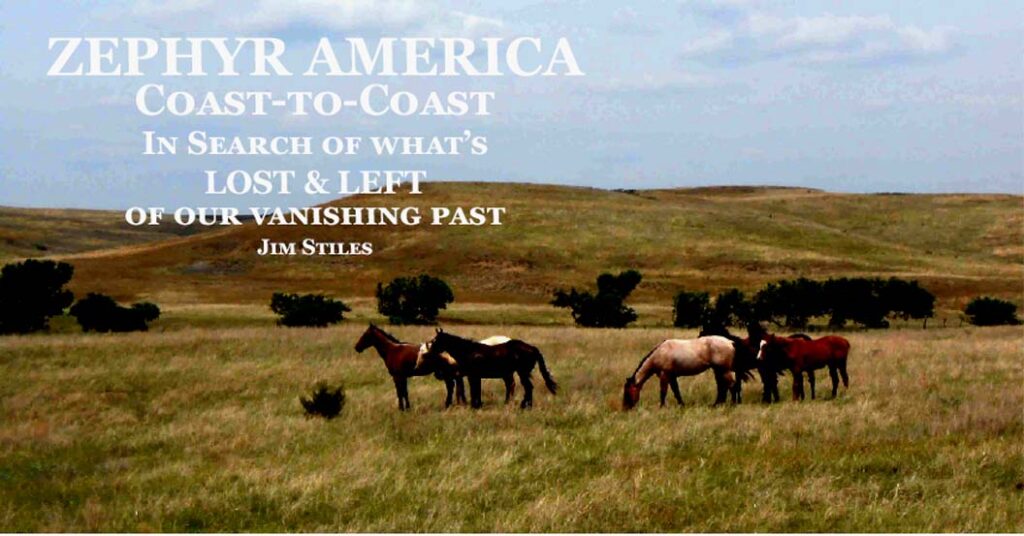
If I tried to list of all my life’s regrets, we’d be here forever. But among those regrets, it almost seems impossible that I never became a horseman. I have the sheer sight of them, before I could even talk. My family often spent Sunday afternoons taking drives in the rural country south of Louisville. In those days it didn’t take long to see the farms. And of course, Kentucky is home to some of the most stunning horses on Earth They would come up to the fence, my father would hold me in his arms, and Dad would pull out an apple for me to feed him.
In any case, it never happened for me. Until I was 18 or so, I was so short I could practically walk under a horse without bending over. At Boy Scout camp, we had opportunities to ride, but I had a rough time getting my foot in the stirrups; my leg just wouldn’t reach that high. And when I tried bridle one, he simply raised his head high enough that I couldn’t reach his mouth to place the bit. I rode horses a few times as a ranger at Arches, with Ken Sleight. And that’s my hands on horse history. There is debate nowadays about the wild mustangs and whether the herds should be reduced or even eliminated. I admit that in this case, my heart and soul stands behind these Big Fellas, whether facts suggest the opposite or not. I think horses may be the most beautiful animals God ever put on this planet. In any case, I’ve at least been able to photograph them, I have so many and I will probably need to do a Zephyr America Horses 2 and 3 and 4. But here’s a good place to start ..
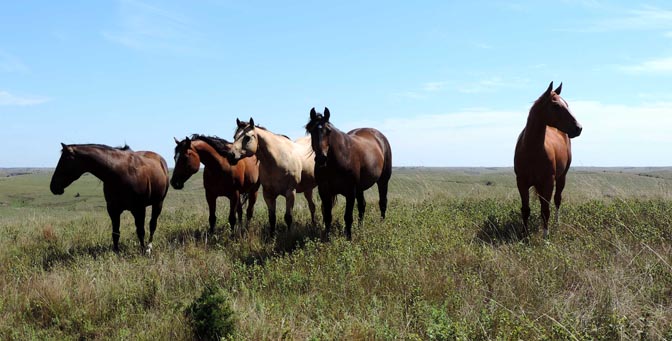
But as the moment got closer, more cars came along and decided to park behind us. Finally it looked like a parking lot. We decided to hop the fence and head for a grassy ridge, a few hundred yards away. It turned out, we wouldn’t be alone there either. But THIS we could live with. Five magnificent horses saw us and came right t to the fence. And they stayed there as the sun grew dimmer. Finally at that moment of total eclipse, the moment when the stars came out, the horses started running around the pasture, We couldn’t tell if they were scared or exhilarated. For sure though, their visit made that day perfect. If I could, I’d relive August 21, 2017 over and over,
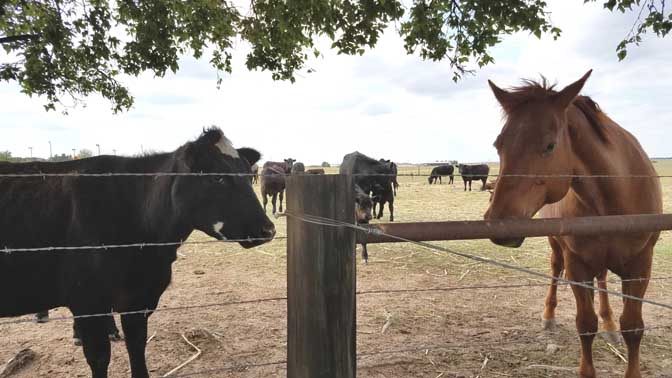
Who knows. But one day as I was taking a walk, I came across these guys. They seemed to be enjoying themselves. Though there was definitely a language barrier, I almost thought I heard the horse say, “Why can’t we all just get along?”
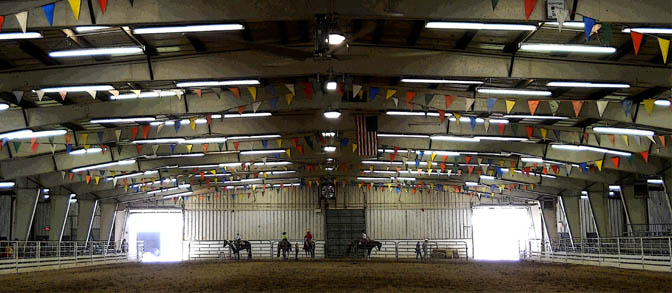
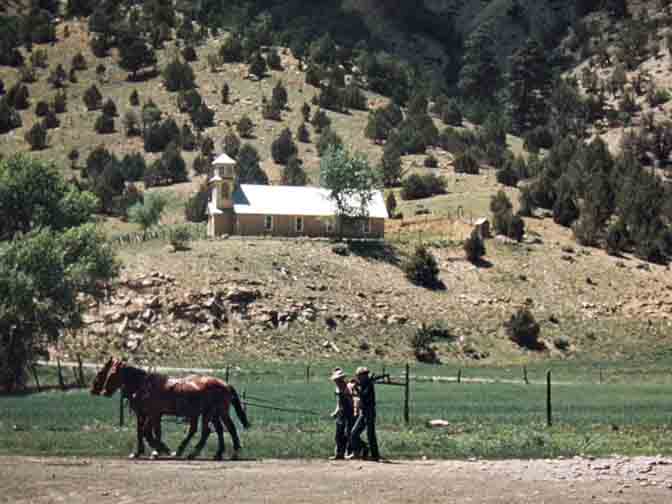
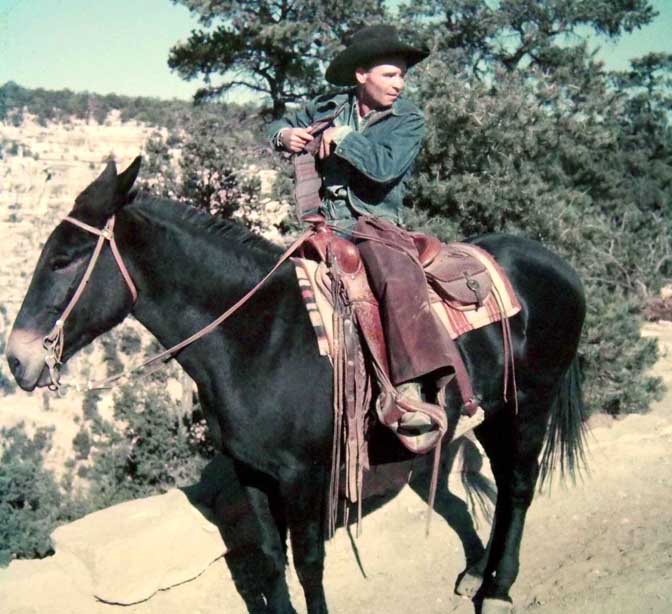
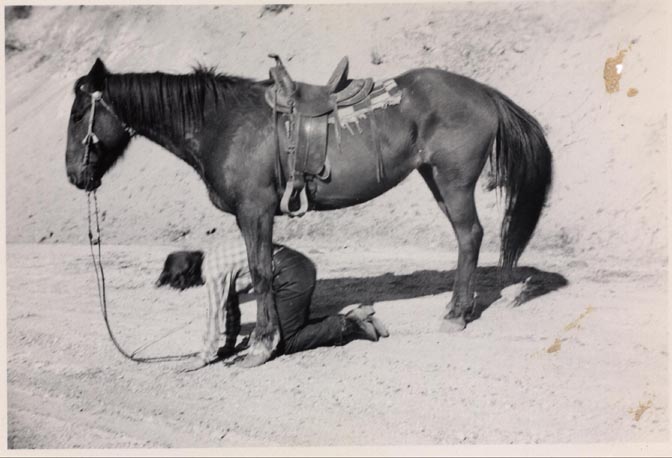
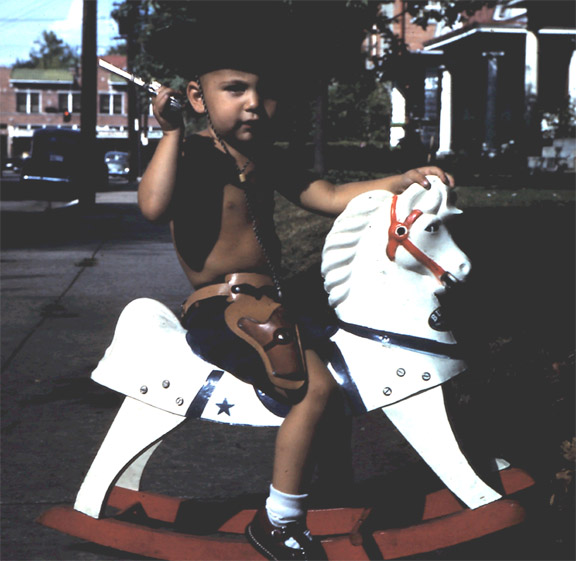

Even 30 years ago, I was trying to find forgotten parts of the American Southwest where I could drive for hours and never see a tourist. As my fellow travelers became more sensitive to damage caused by the extractive industries, especially oil and gas, they had no interest in going near these fouled and besmirched parts of the Southwest. I realized that if you can tolerate the visual intrusions, and sometimes the smell, those parts of the West dominated by the extractive industries are some of the most peaceful parts of the country. If peace and solitude is what matters to you
“Who’d want to go there? They have oil wells!!!” Perfect
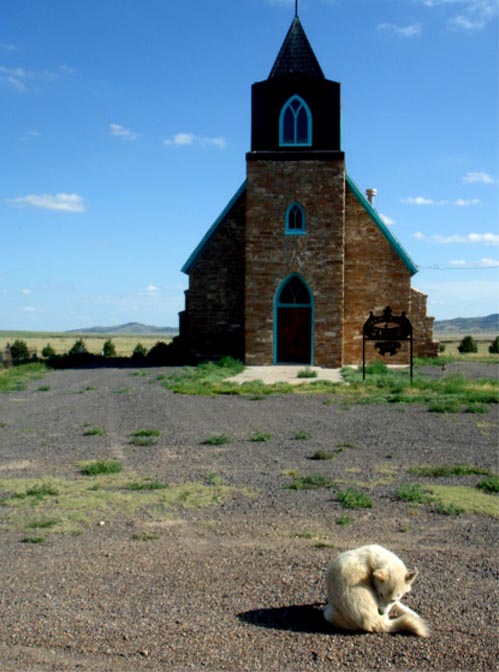
So in 1990, I made my first of many exploratory expeditions into those blank parts on the map that I’d never heard anyone emote over (in a positive way). In New Mexico, I discovered the metropolis of Roy, learned that Bob Wills had grown up there and that longtime Moab locals The Knouff Family, had a connection as well. Their father Buzz was born in Roy. Even thirty years ago, Roy was close to ghost-town status. Recently even its independent general store went belly up.
Roy sits on the edge of a long plateau. Twenty miles south, the road turns east and descends more than a thousand feet into some of the most barren and desolate landscape you’ll ever see. Some might feel justified in saying, “THIS is truly the ‘stinkin’ desert.’” That’s why I loved it. The view is wide open. You can see the crumbling highway 20 miles ahead. Within that wide open vista, something caught my eye on that first journey. As improbable as it seemed, I thought I could make out the outline of a small church. Sure enough, as I drew closer, I was surprised to find a small sandstone chapel. It was called the Bueyeros Sacred Heart Catholic Church and I later learned that it had been constructed in 1894. Before the Dust Bowl devastated this part of the country in the 1930s, Bueyeros had boasted a population of almost 400. Now it’s practically abandoned.
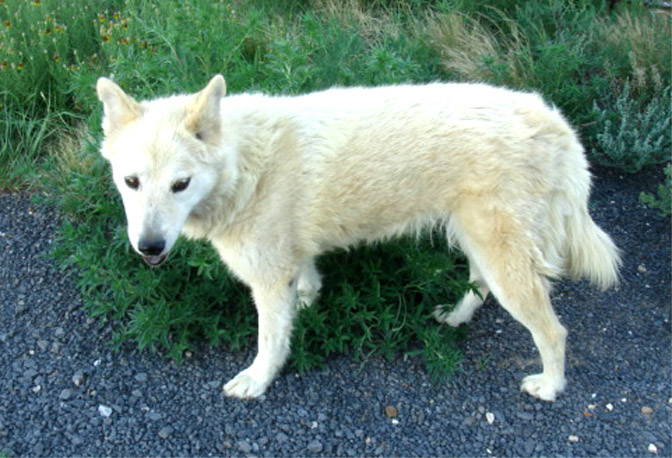
In 2011, I returned to that part of New Mexico and to the Bueyeros Church, wanting to share the experience and the oil condensate odor with a new friend, and discovered a new resident and perhaps landlord/priest of the parish. It was a white dog—the friendliest sweetest animal I think I have ever encountered—especially considering I was a stranger. He ran out to the car to say hello, then followed us around the church and through the old cemetery, with a permanent smile emblazoned upon his beatific face. His tail never stopped wagging. And if I paused, his instinct was to roll over on his back and wait for a belly rub. It seemed like a good idea. If white dog was as divine as he appeared to be, a good belly rub might get me absolved of at least a few of my more troubling sins.
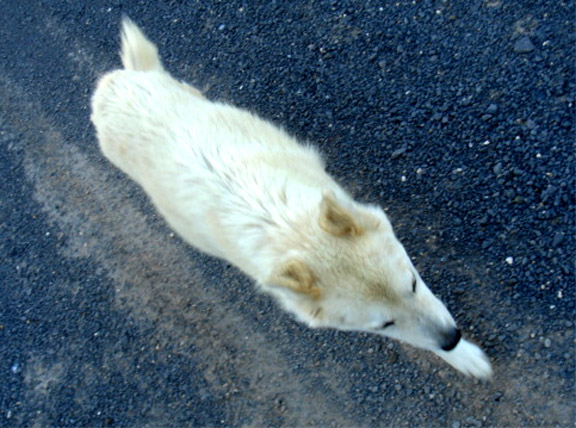
We stayed half an hour, then walked back to the car. He followed us and waved goodbye as only happy dogs can. Finally I asked him if he were Jesus himself and he just rolled over on his back and grinned at me again . I think he was.
It was such a wonderful and happy experience that I decided to include a few pictures of him and the church in the next online Zephyr. About a week after the story and photos ran, we were shocked to find a couple messages—from the owners! Somehow this dinky little Zephyr story had made its way across the ether to Amarillo, regarding this blessed critter. Here were their comments:
This was from “Kitty:”
Hey,
Just got a phone call from my daughter who lives in Amarillo, Texas. Demanding I get on this website. Low and Behold, there is Pinky, the family pet. Pinky is 13 years old, we have had her since she was a pup (so were the kids). The kids have since grown up and gone but Pinky is still here.
Thanks so much for making my day!
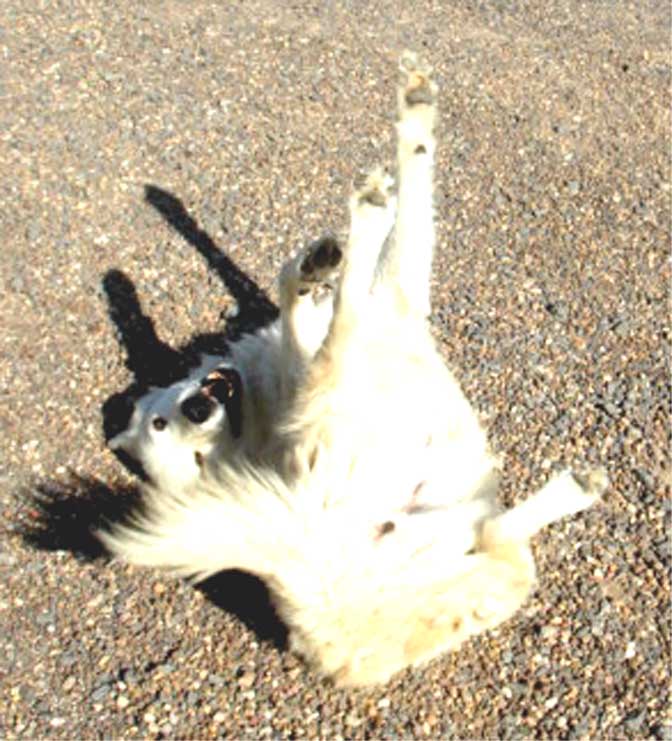
.And then this from Katrina:
Hello, this dog is our dog and her name is pinky. This is a great story and funny pictures.
Finally Shawn Jeffrey wrote:
Pinky is the icon for Bueyeros! Such a sweet dog and always greets every visitor. She has never liked being taken to town and was always the happiest in Bueyeros. Dennis and Kathy have been the caretakers of an Angel for many years!! I’m glad to see Pinky is still there and hosting greeters at the Bueyeros Church!
An Angel is right. Pinky, like so many animals, had such a better soul than most of us humans. Just three days ago, I had to put my beloved cat Possum to sleep. He had been born with bad kidneys and for the last six years, I had given him medicine every morning to slow down the deterioration. But finally nothing worked and he was starting to suffer. He was only nine. Lately I’ve concluded that cats and dogs should live to be 90 and humans should be limited to about ten.
Because I realized that if Pinky was 13 years old in 2011, he has no doubt left us by now, hopefully for eternally happier times, surrounded by the love and affection he so greatly deserves. I recall the dyslexic agnostic who wondered if “There really is a Dog.” In Pinky’s case, the answer just might be yes. I passed through Bueyeros last summer. No sign of Pinky of course. I still miss him and I will never forget him. And if he IS Jesus, I hope he has a kind word for me.
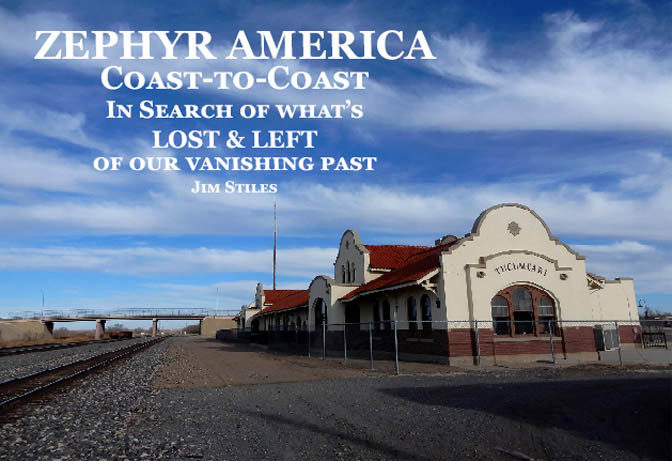
TUCUMCARI, NEW MEXICO from 1966 to 2020. My father took the family out west for the first time in June 1966. We left Louisville in the late morning, drove all day and through the night, and when the sun came up, we were a hundred miles east of Tucumcari, New Mexico. I thought it was the most beautiful place I had ever seen. My father had reserved a room for us at the Travelodge on Route 66 (there was no Interstate 40 yet). We all slept soundly for a few hours and then I went off exploring. I was intrigued by the nearby ‘Tucumcari Mountain,” which is really more butte than mountain, but as Firesign Theater might have said, “It’s a real beaut…real pretty too.
Two years later, I made my first journey West from Kentucky without “parental supervision.” THANK GOD. My buddy and fellow spelunker Jeff Dutton was my sidekick (or I his), and we followed almost precisely the same route and the same schedule as my dad had taken in ‘66. And being my father’s son, I even booked a room at the same motel. We arrived at almost the same time of day.
That evening, we decided to eat at the adjacent Mexican restaurant. It’s hard to imagine but in those days, one would be hard pressed to find a Mexican eatery of any kind east of the Mississippi River. In some of the Deep South states, there may have even been laws against it! So to be honest, we had no bloody idea what any of these menu items were. I think I may have seen tamales sold in a can, but that was the extent of my culinary knowledge. If you want to know how really stupid two 18 year old kids from Kentucky be, when the waitress brought us chips and salsa, we thought the salsa was soup. We started eating our salsa with a spoon. “My God,” I said to Dutton, “this soup is cold!! What is wrong with these people?” I’ve learned a few things since then.
I didn’t get back to Tucumcari for years. By the mid-70s, Interstate 40 had completely bypassed the old road and “historic” US Route 66. All the old cafes were replaced a mile north of the highway by every conceivable fast food chain one can imagine. The old part of the town was in serious decline. Many of the great funky old motels lay forgotten. Many of them have closed. Some have burned down or been bulldozed, though someone had the wisdom to keep the motel signs from being removed.
And in recent years, efforts to rejuvenate the downtown, by promoting its historic, not to mention kitschy value, has met with some success. In these photos, you’ll see the old Tucumcari depot that is even harder to spot than the old main drag. In fact, “downtown” was a few blocks north of US 66.
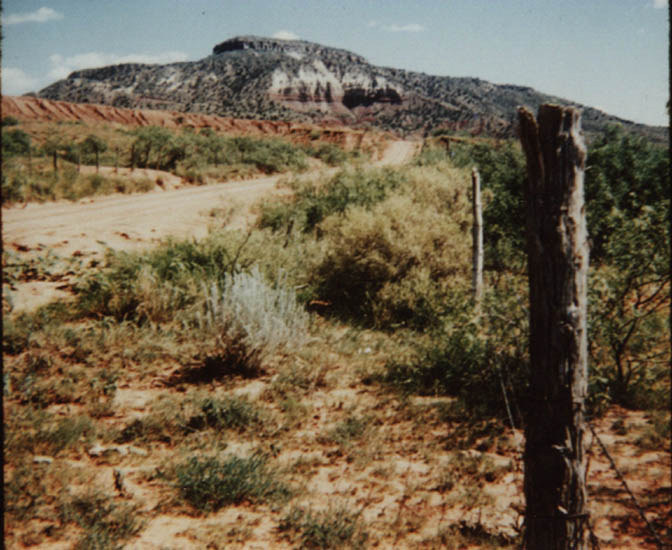
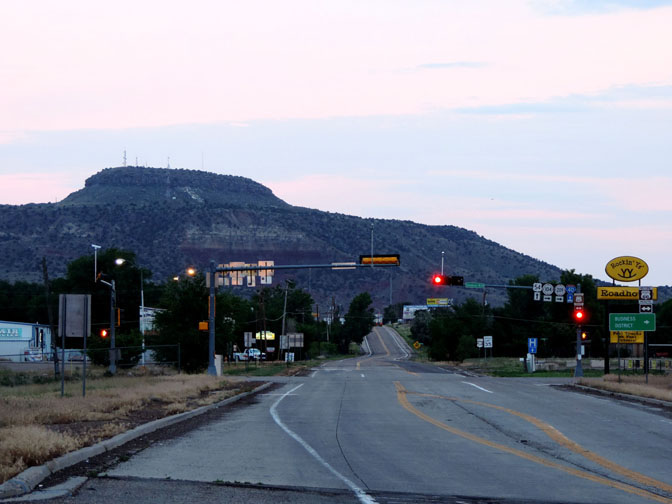
Tucumcari Mountain, New Mexico in 2020
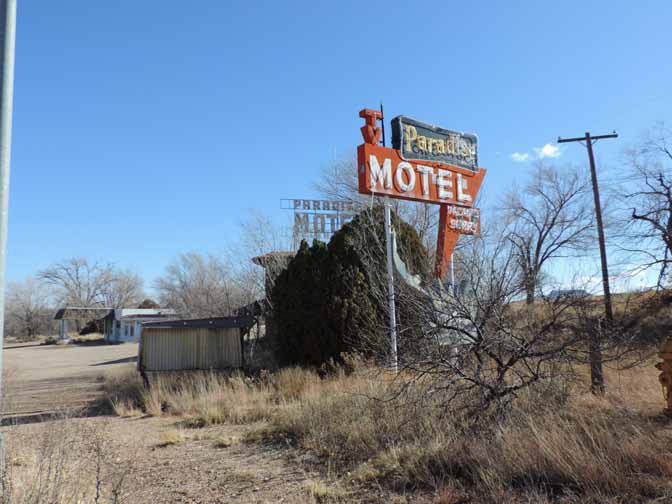
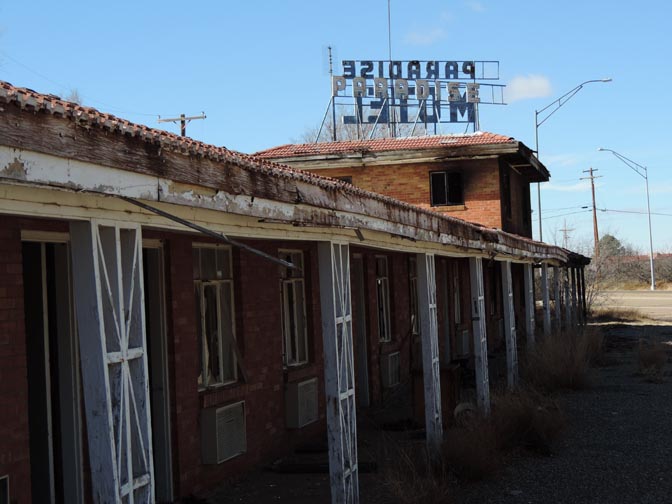
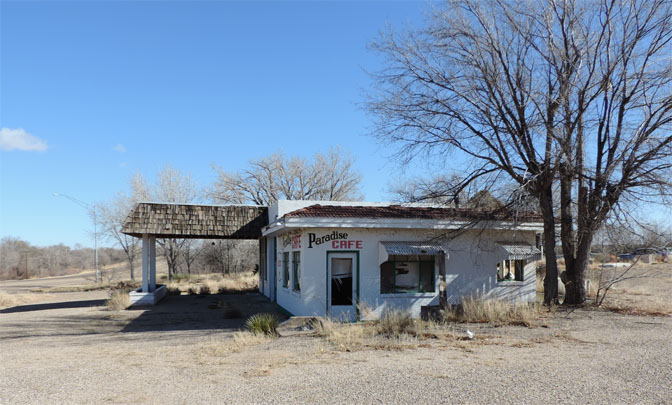
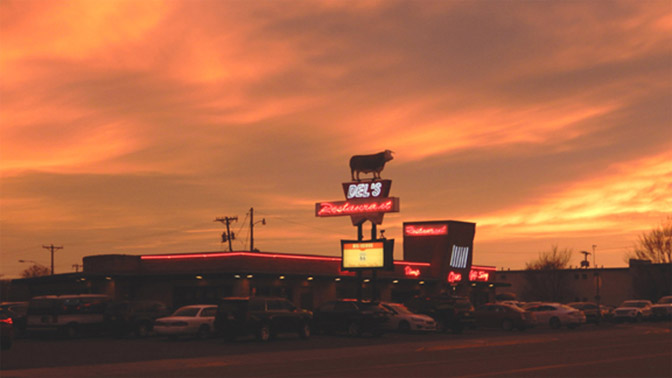
And in recent years, efforts to rejuvenate the downtown, by promoting its historic, not to mention kitschy value, has met with some success. In these photos, you see the old Tucumcari depot that is even harder to spot than the old main drag. At bottom left—some good news. This is the same restaurant where Dutton and I tried to slurp the salsa like soup in 1968.
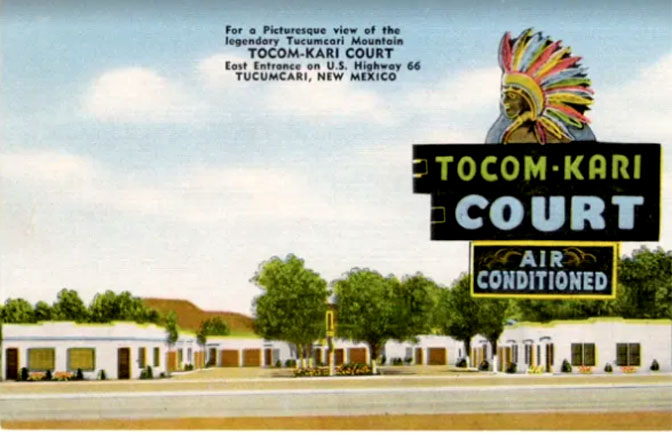
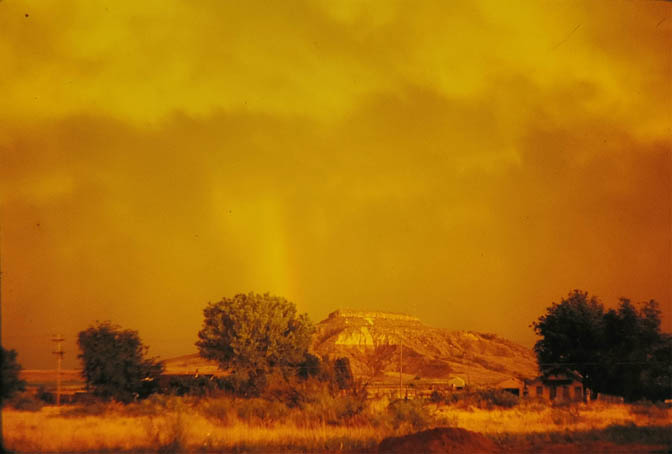
A BIRD BY ANY COLOR, OR ANY SIZE, IS STILL A THING OF BEAUTY.
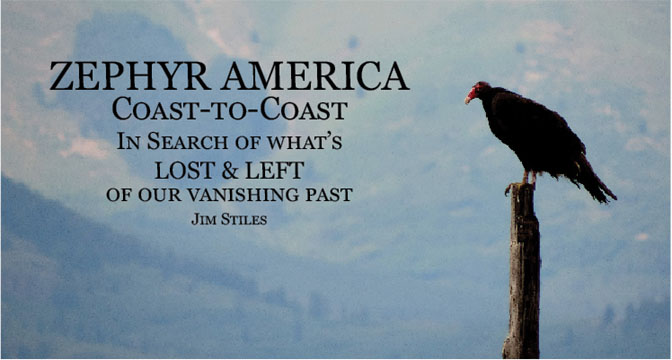
Some say the bird populations across the North American continent are declining, and they may be right, but I cannot think of a sight that gives me more pleasure than images like these. This is just a part of my collection, grossly incomplete, so look for Volumes 2,3 and more in the Future…
The American Turkey Vulture, the critter that Edward Abbey claimed he wanted to return as, if reincarnation was truly an option in the afterlife. The photo above shows the Abajo Mountains in the distance, from just a few years ago. What the hell….say “hello” to Cactus Ed
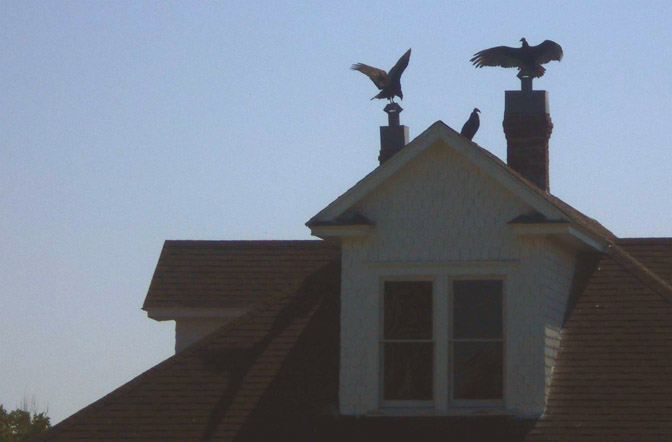
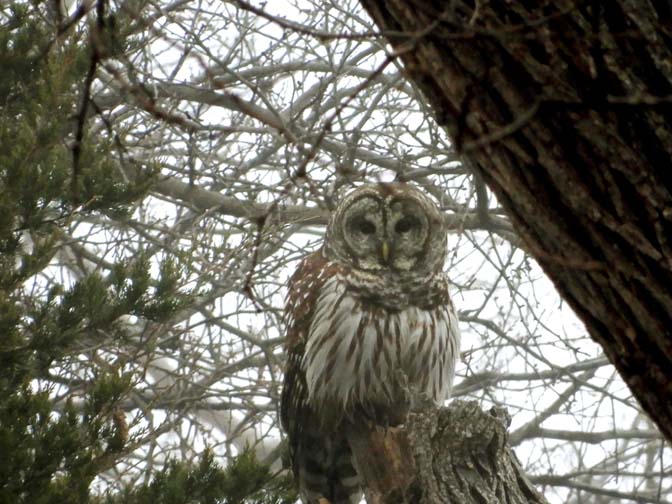
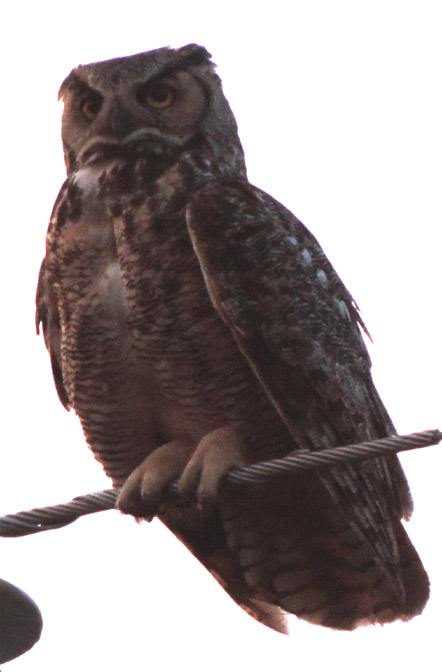
THE BLUEBIRDS OF SAN JUAN COUNTY, UTAH
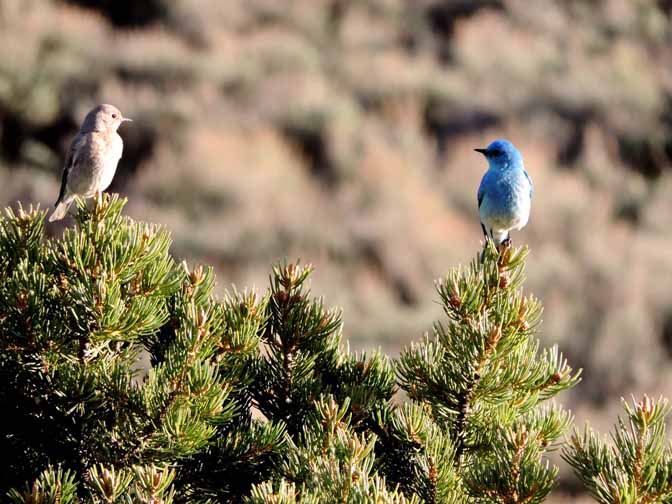
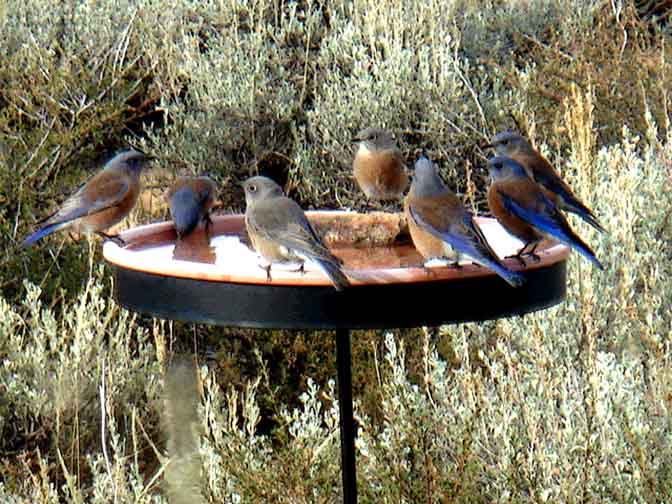
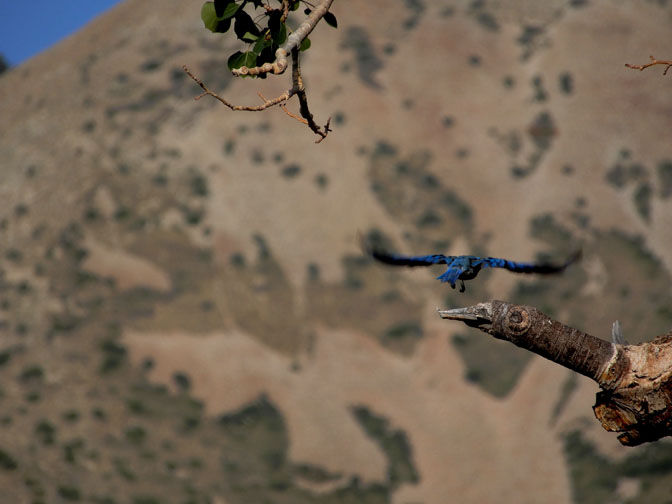
BALD EAGLE COUNTRY
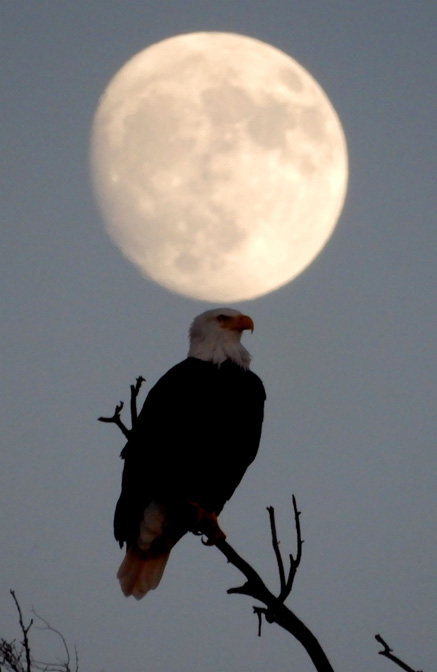
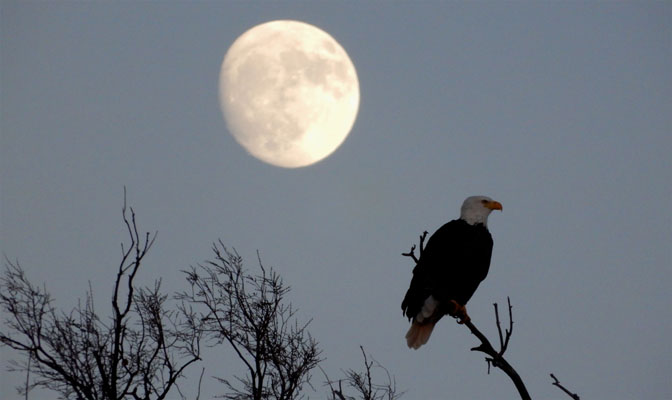
Can it get better than this? I’ve seen Bald Eagles for decades, especially along the Colorado River north of Moab, and in the winter. But this is from a spot adjacent to a local lake, here on the High Plains. It was a perfect evening. Tonya and I used to drive around ‘our lake’ almost every evening. We often saw the Eagles in the winter, The Full Moon was the bonus we hadn’t expected. It was a perfect evening. A Utah Conservationist once said that the Great Plains were “dead.” He should have stayed longer than a fast ride across I-70…and really looked around.
PELICANS ON THE PRAIRIE?
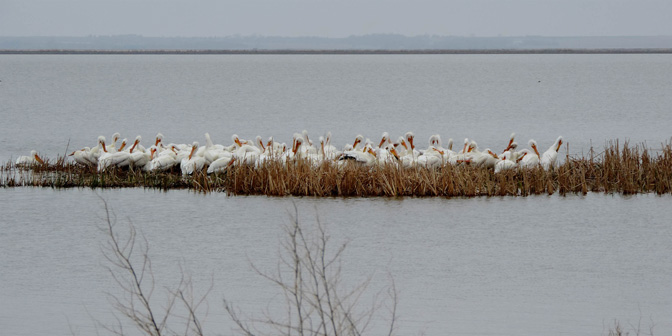
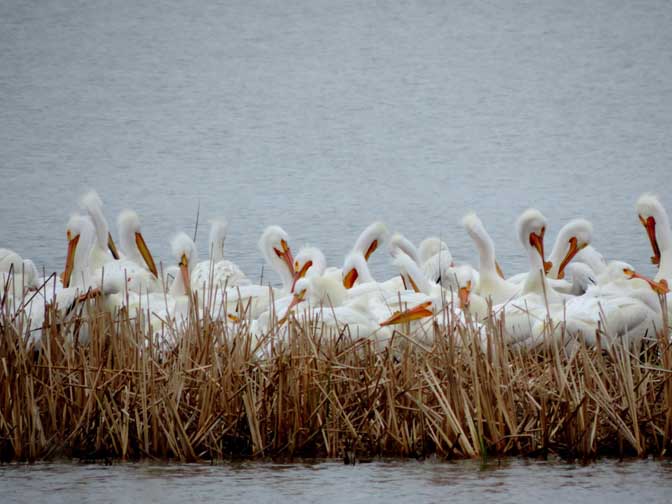
GRAIN ELEVATORS — The Concrete Icons of the Great Plains
In the years since I moved away from the canyon country, I yielded, as it were, at least one free parking space in the ever growing, always expanding, never big enough phenomenon that we call “The New West.” I miss the landscape. I miss my ever dwindling group of friends and pals…
But I don’t miss the crowds or the unbridled greed or the lies that the next enviropreneur/developers tell themselves, “Oh our growth wont be like Moab…Nosirreee Bob…We’re looking for ‘smart growth.’ WE can have it all.”
So now, out here with the flatlanders, I no longer have mountains or buttes or other natural landmarks to tell me where I am. No Shiprock. No Mt Tukunikivats. No Bears Ears.But we have something else. Now when I try to get my bearings on the long wide open plains, I can search the horizon and look for those gleaming white towers that rise above the prairie. I’ll say, “Okay…so if that’s Coats, then that must be Sawyer. I guess we’re too far to see Pratt, but that might be Haviland. The High Temples of the Great Plains—the grain elevators. Early on, they were built of wood and tin, but about a century ago, the process of building massive rows of these architectural marvels, built, via formed concrete, spread rapidly across the country. While they dominate the skyline of Middle America, they can be found in most states where agriculture is an important part of their economy
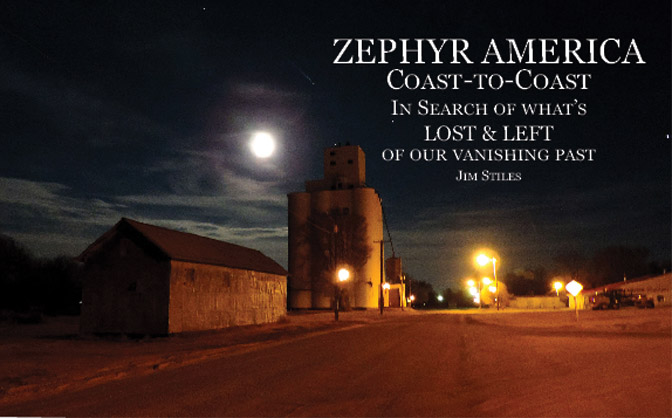
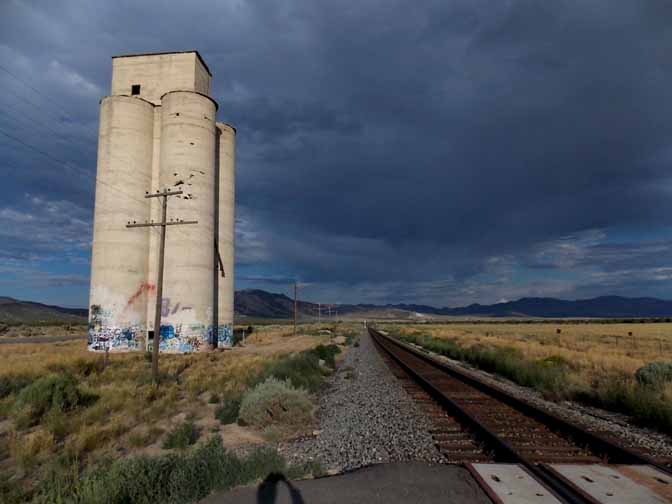
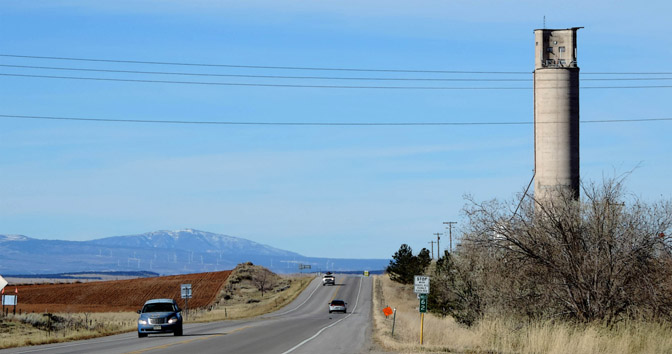
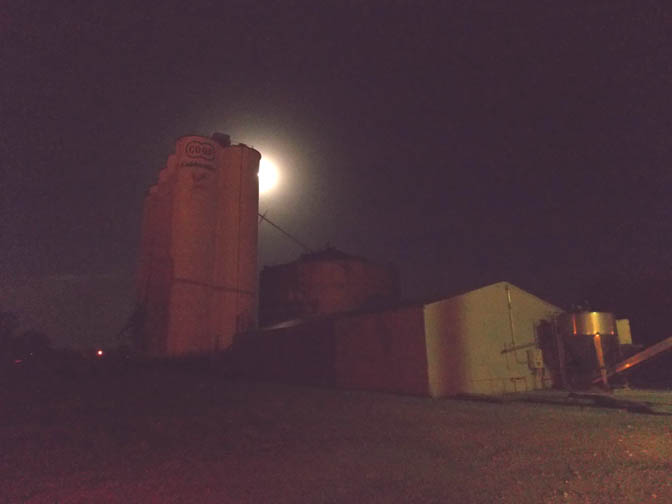
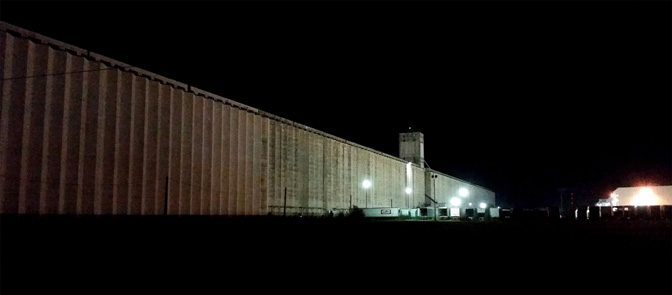
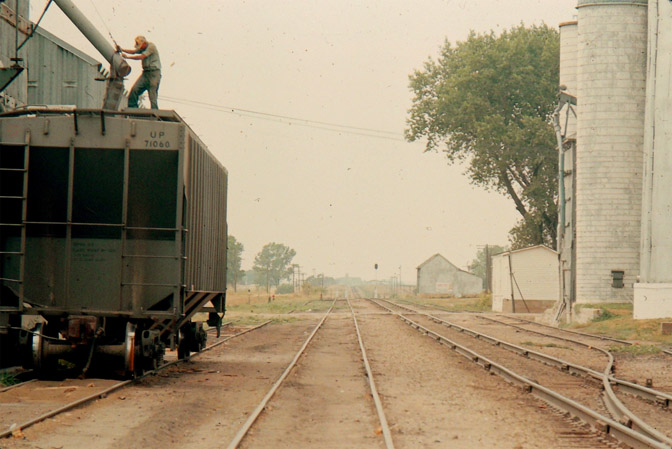
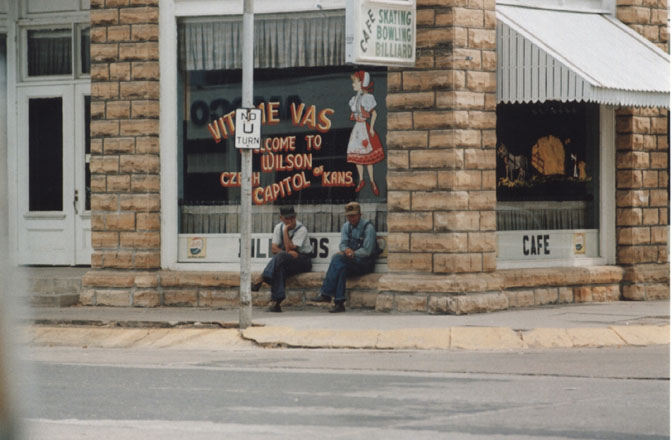
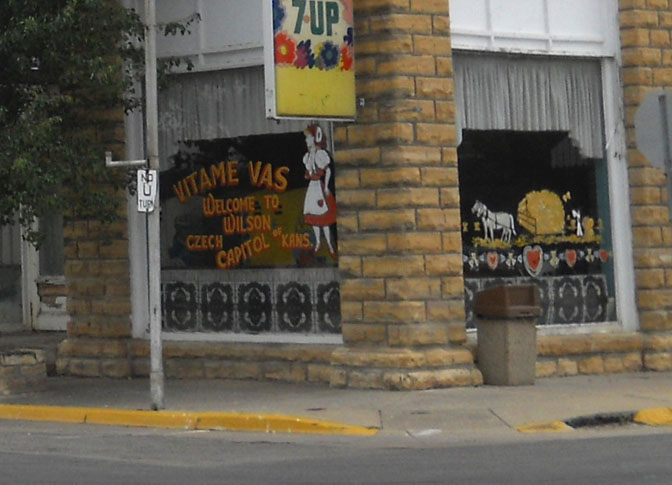
We returned to Wilson and stayed at the nearby Midland Hotel. (Many of the scenes for the film “Paper Moon” were shot here.) Incredibly, the cafe’ across the tracks had hardly changed at all. There was a new 7Up sign and the only part of the original image missing were the two farmers.
Sad to say, though, the cafe’ was now closed down and vacant. We went back a few years later…The wonderful picture window lettering and images had at long last removed…by someone who clearly had no appreciation of history. RIP
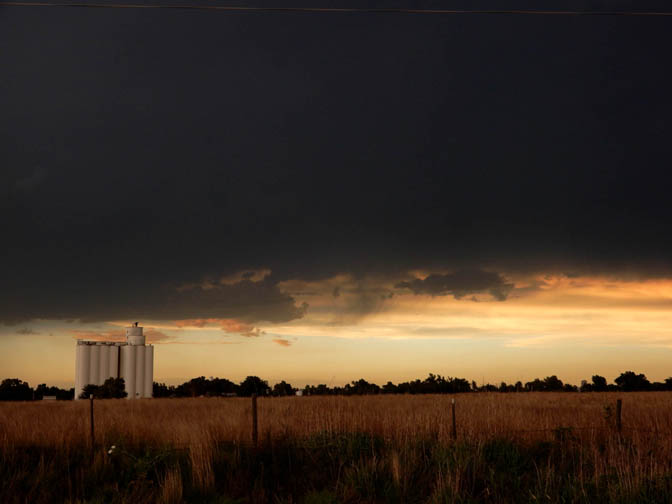
SUNSET…or SOMETHING ELSE?
I’ve used up more film taking photographs of sunsets than any other view imaginable. They’re spellbinding and somehow, snapping one shot after another was a way of better preserving that special moment. With the advent of digital cameras, it’s been possible to shoot as many images as I wanted to. In the days of film cameras, I’d send in the Kodachrome mailer, wait a week for the slides to return, and wonder why I took so many photos on a 36 image roll of film. In any case, this Zephyr America is dedicated to sunsets—just a few here out of hundreds in my archives
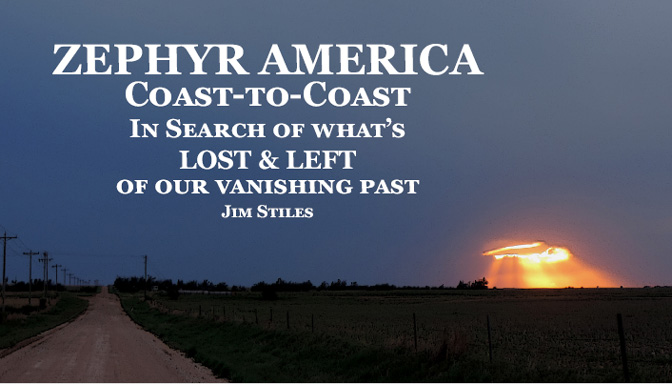
The first image, the title photo was shot not far from my home on the High Plains. It was a completely overcast day, and rather drab. No dramatic thunderheads. Just grey sky. But suddenly we saw the sun as we traveled along an old dirt road. It was as if the sun had punched a hole in the clouds. Only at that one spot did the sun break through. We had never seen anything like it…
.
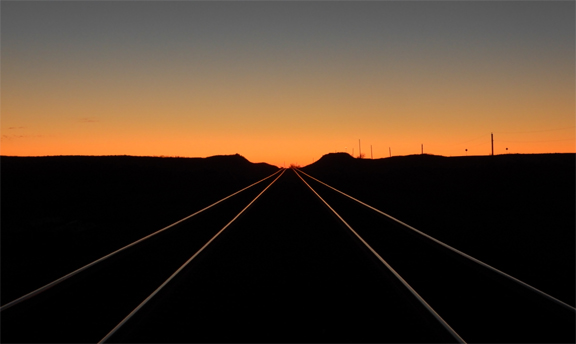
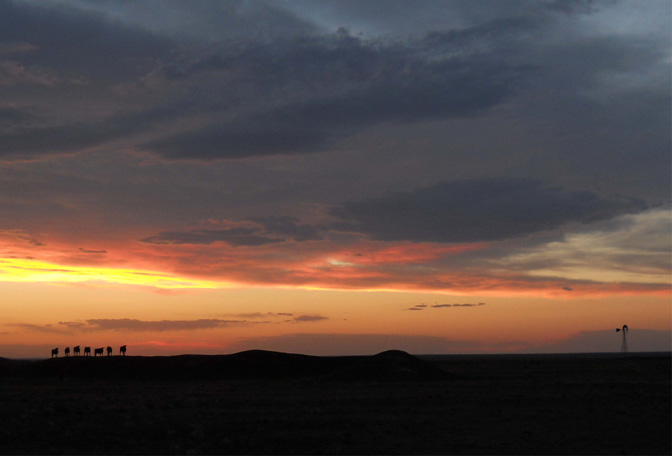
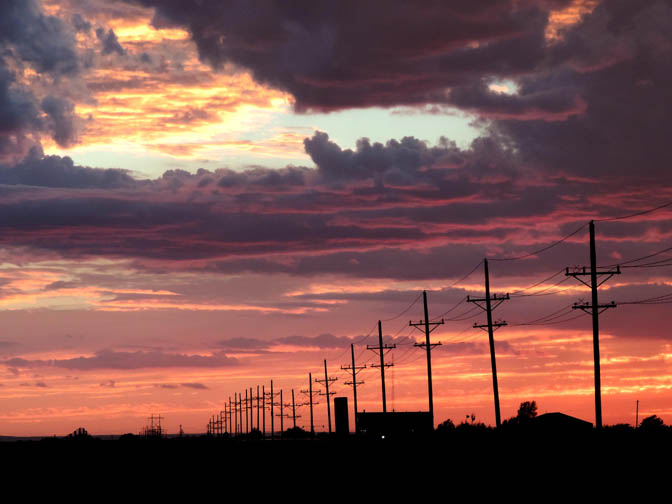
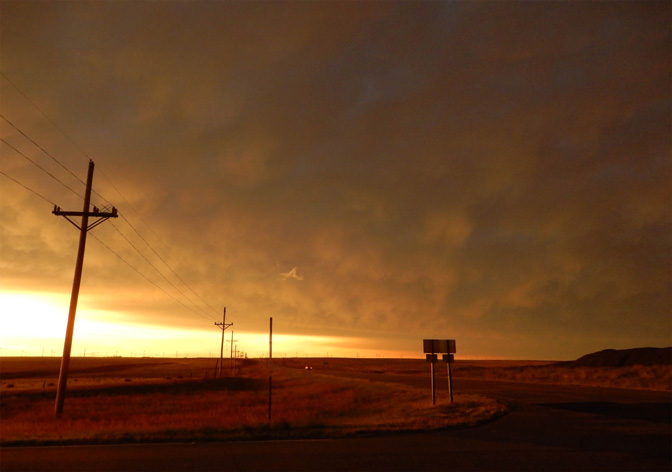
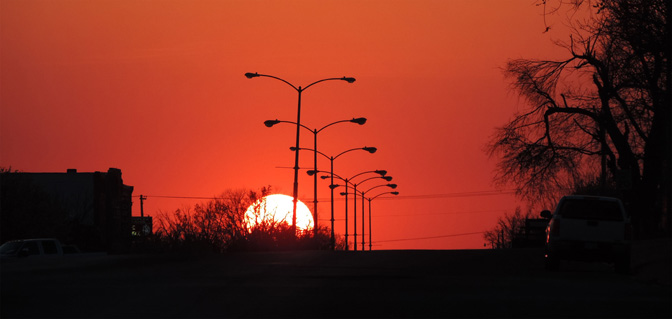
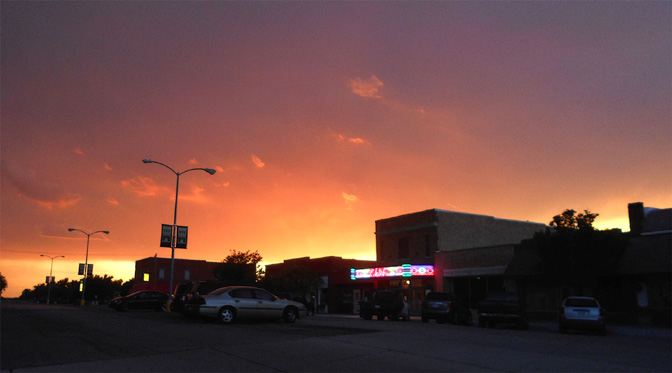
SUNSET? NOPE
AUGUST 21, 2017—THE TOTAL ECLIPSE OF THE SUN
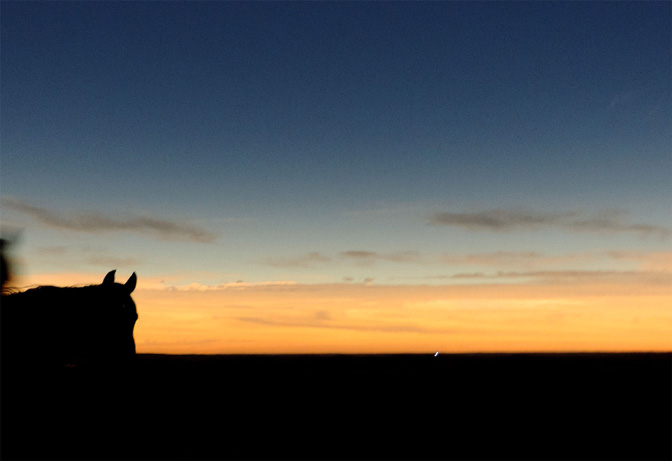
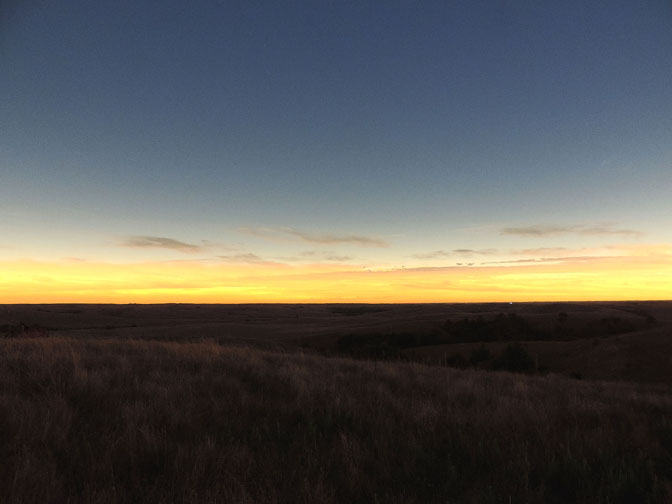
And finally…the “ears” no one had heard of until 2016
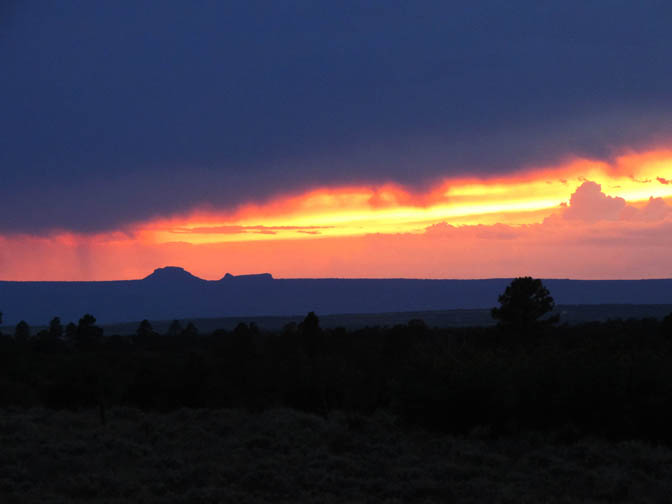
Who knows…I have my memories
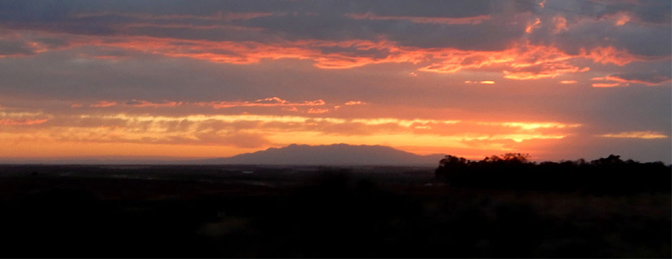
Jim Stiles
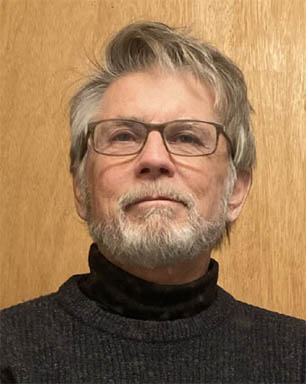
Jim Stiles is the publisher and editor of The Zephyr. Still “hopelessly clinging to the past since 1989.” Though he spent 40 years living in the canyon country of southeast Utah, Stiles now resides on the Great Plains, in a tiny farm and ranch community, Coldwater, Kansas, where there are no tourists.
He can be reached via facebook or by email: cczephyr@gmail.com
.
TO COMMENT ON THIS STORY & THESE IMAGES, PLEASE SCROLL TO THE BOTTOM OF THIS PAGE.

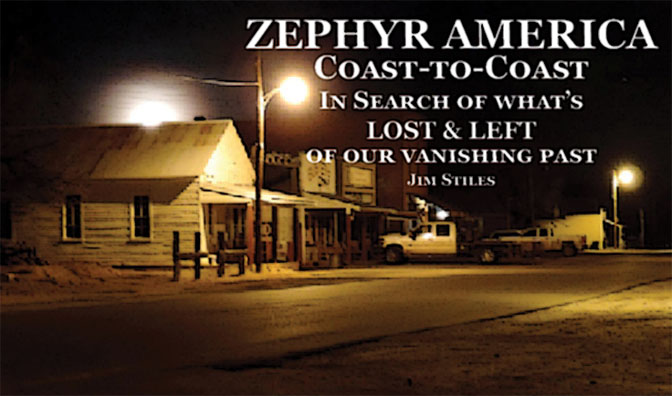
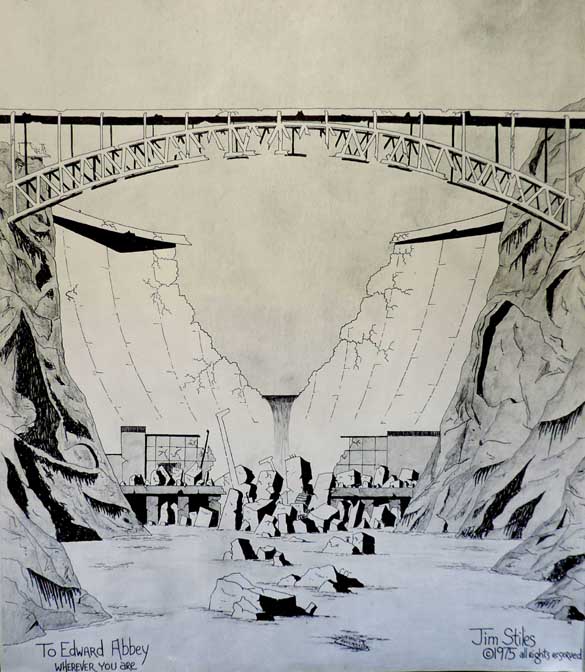
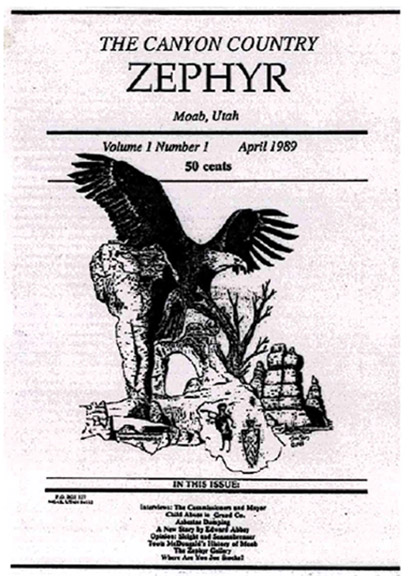
Signed copies

And I encourage you to “like” & “share” individual posts.
Why they can’t just leave the site alone is beyond me,
but that’s what Facebook likes to do.
ALSO NOTE: I post old photographs and stories from our 25 year old archives every day. Pictures from Herb Ringer, Edna Fridley, Charles Kreischer.. even a few old photos from my Dad. So if you want to stay caught up on our historic photo collections,
be sure to “follow” us on Facebook…Thanks…Jim
https://www.facebook.com/FansoftheCanyonCountryZephyr/
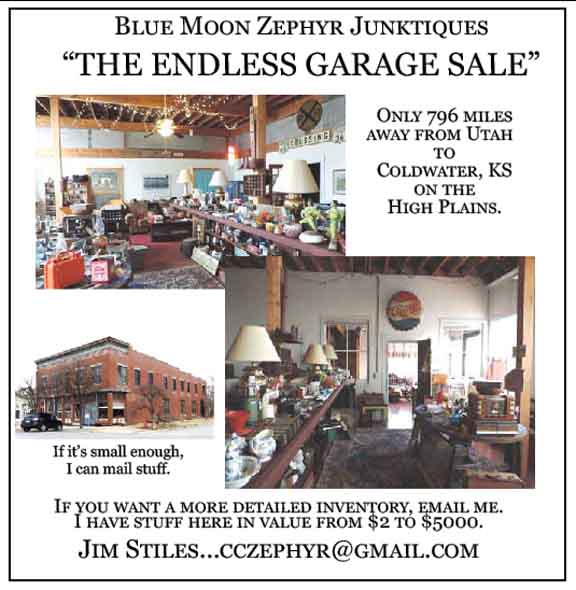
https://www.facebook.com/profile.php?id=100086441524150
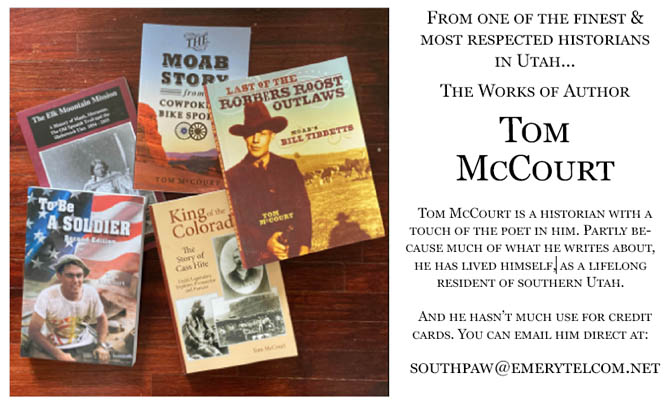

And check out this post about Mazza & our friend Ali Sabbah,
and the greatest of culinary honors:
https://www.saltlakemagazine.com/mazza-salt-lake-city/
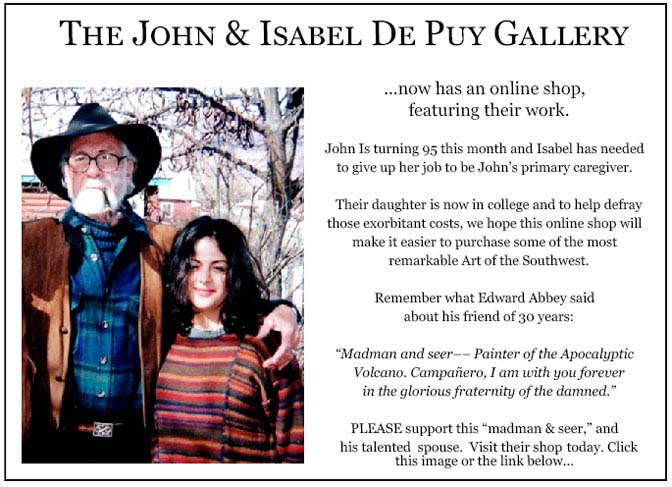
More than six years ago, The Zephyr, me & four other individuals were sued for defamation by the former Moab City Manager. Faced with mounting legal bills, my dear friends John and Isabel De Puy donated one of John’s paintings to be auctioned.
ALL the proceeds went to our defense.
Thanks to them, our bills were almost completely covered.
Now I’d like to return the favor. Check out the link below and their online shop… JS
https://www.depuygallery.com/shop.html

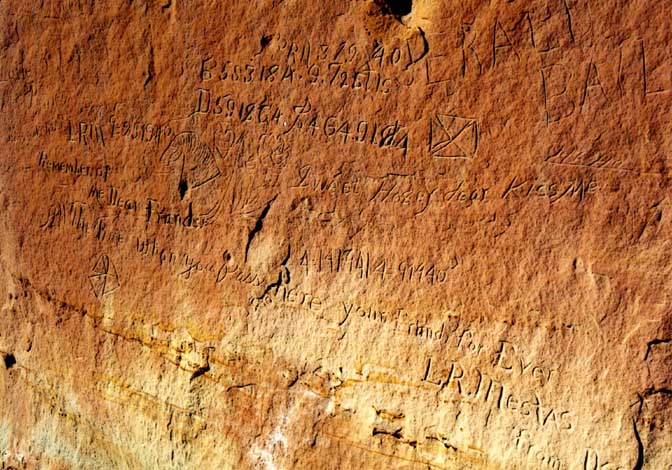
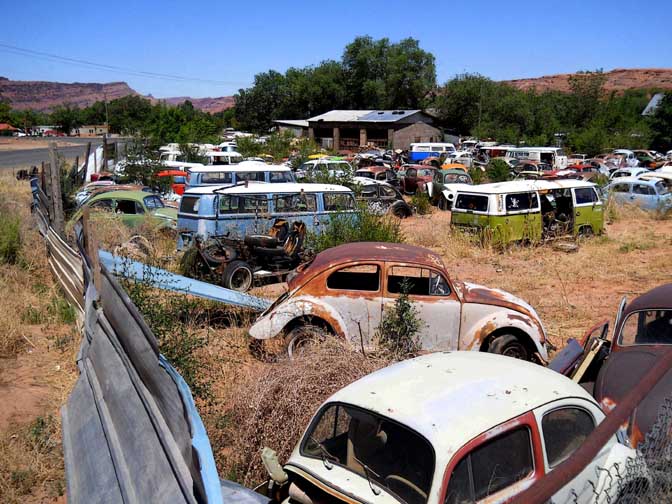
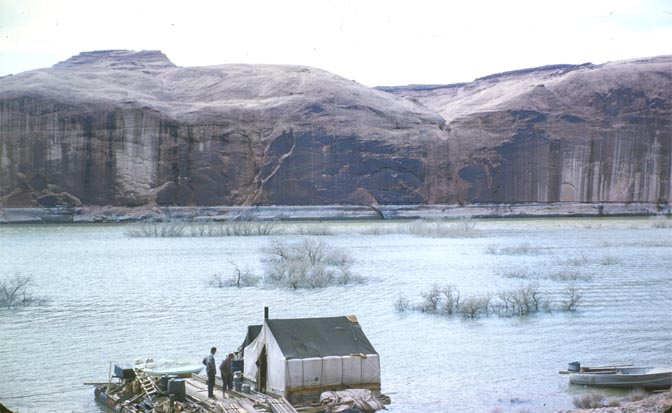
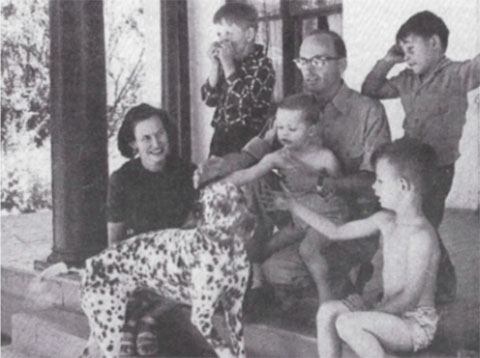
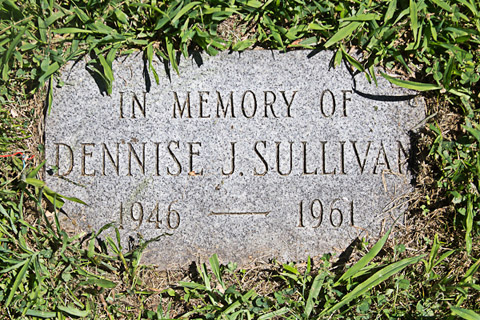
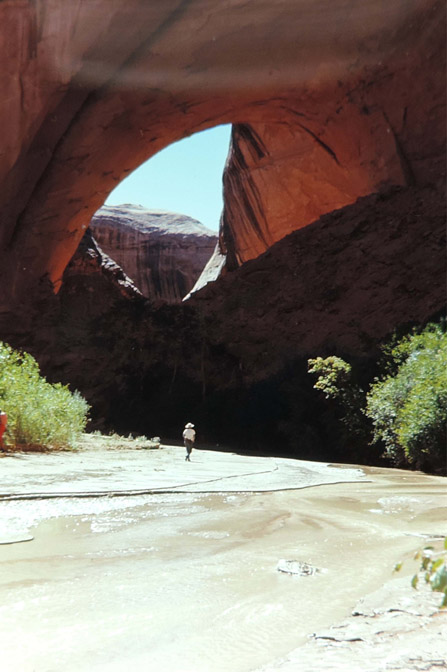
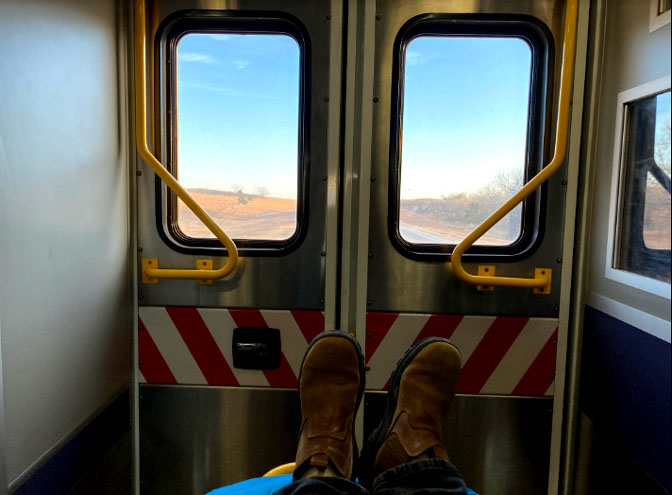

And once more, now that you’ve read the latest Zephyr Extra and waded through the ads, please take a minute to comment. Thanks for your support…. Jim Stiles

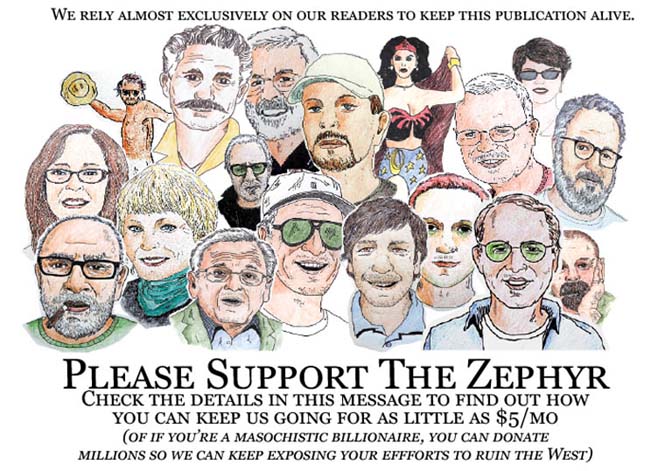
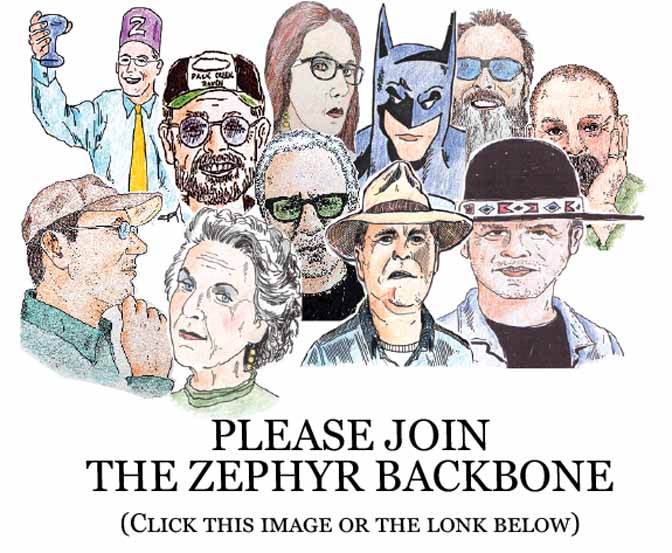
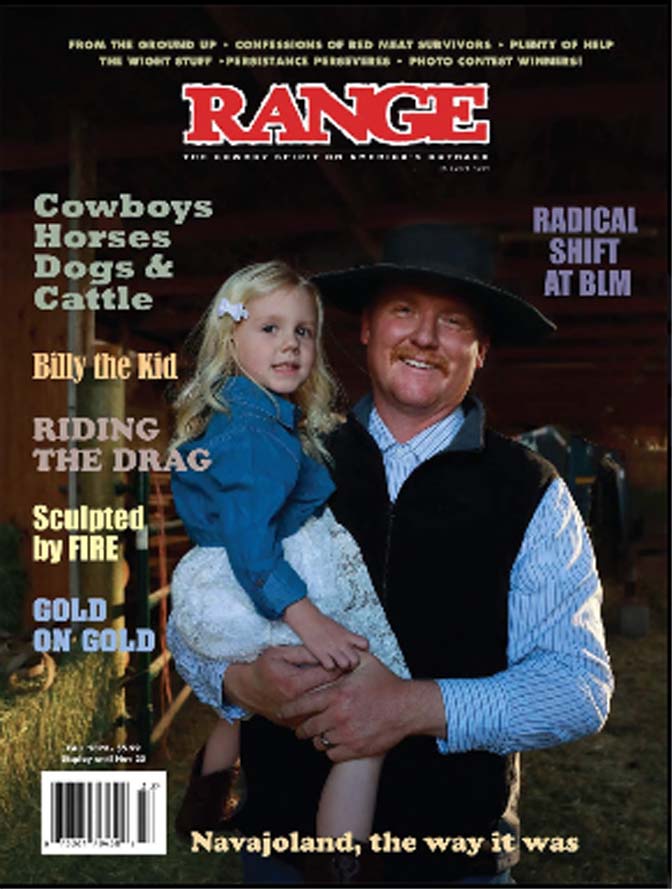
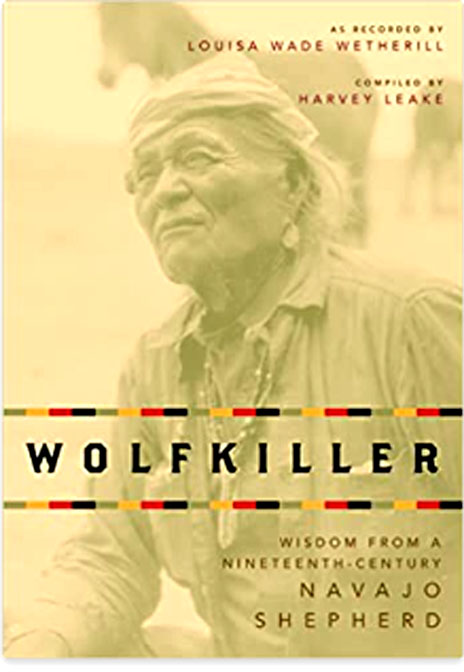
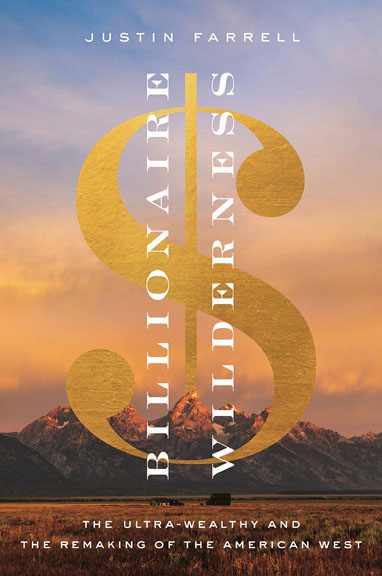
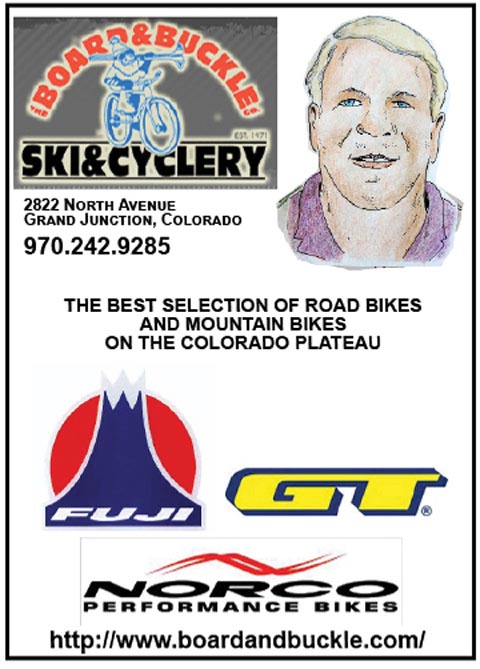
I remembered later that the photo of the horses with the church in the background was previously identified by a Zephyr reader, William Diehl. He nailed it with this link…It was near Pagos Springs. Lets see if this URL works
:
https://www.google.com/imgres?imgurl=http%3A%2F%2Fpagosa.com%2Fwp-content%2Fuploads%2F2016%2F01%2Fchurch2.jpg&tbnid=fvrsRet6rdrVHM&vet=1&imgrefurl=http%3A%2F%2Fpagosa.com%2Fkeep-pagosa-pagosa-by-knowing-our-history-hispanic-settlement%2F&docid=V1wq22AEG58HHM&w=500&h=477&hl=en&source=sh%2Fx%2Fim%2F5&fbclid=IwAR3cVmiFAGbAN37U8WT2i5NqIld0iCAu4gozJ4GmXZs6IF0ljgZU-Tp7rwA
So enjoying these!!! I got as far as the Tucumcari article and had to stop to post this comment. We drive through Tucumcari about twice a year on our way from Texas to Moab, Utah (and points north of Moab). It has certainly changed in the 40 years that we have made these treks!
I am still laughing over you and your friend eating the salsa as if were soup. I had a similar experience in Paris years ago. A friend and I ordered the lamb from the menu of a fancy restaurant (The Luca Carton). It was served with what we thought was a delicious side dish. I decided to ask our waiter what it was we were eating. He looked at our plates and then at us and said with total disdain, “That WAS the mint.” Turns out the mint was to be a garnish for the lamb.
Love these articles and the beautiful pictures!
Great pictures going along with great stories. I share your relationship with horses. As a young man I did some riding but as life continued I had no access. Horses were once common moon transportation and vital on the farm. Now ownership costs a fortune and they are a luxury. Thanks for the share Jim.
I love horses and history. Great pictures . My Dad was a cowboy as his Dad was. We always had them.. Now our great granddaughters ride. I pray as they get older they stick with it. Love reading your stories.
The Tucumcari Depot is very similar to the Rhyolite Depot in Central Nevada. I’d not ever heard of Roy or Wilson but people right here in Clark County,NV have never heard of Nelson which is only 60 miles Southeast. We know how hard it is to let our furry friends depart. We had dogs at different times, one lived to be 15 , the other 16. Thank you for the look into these historical areas across the Southwest. We loved the same adventures into places that once were booming. We’d sit in the rocky ruins of an old home wondering what the occupants were like and what their activities were.
That forgotten, lonely, empty corner of America — far southeast Colorado, the western end of the Oklahoma panhandle, and northeast New Mexico east of Raton — feels like a time warp back out of the twenty-first century to a long-vanished America.
Thanks Jim, as always good stuff! I dont know what has happened to me I hit my 50’s and started putting up bird feeders and watching birds now!
Some terrific landscape photos. OMG – the bald eagle & full moon!!!